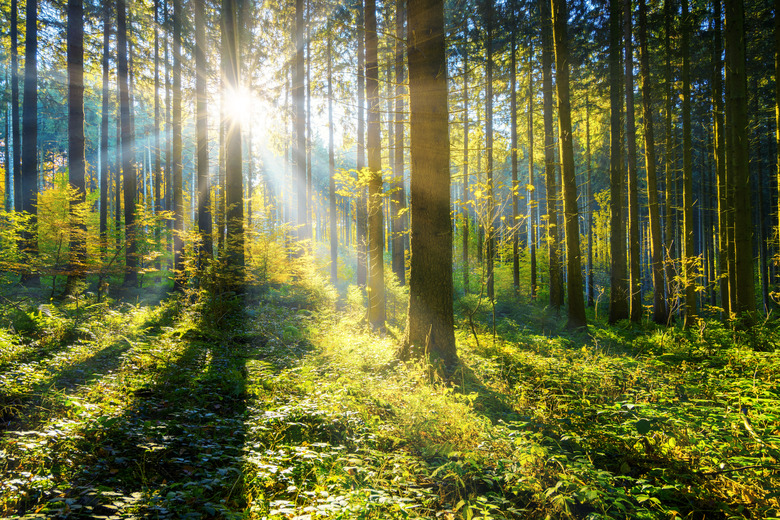Negative Effects Of Clear-Cutting
Clear-cutting is practiced on a large scale by lumber and logging companies. From small farmers slashing and burning a few acres for subsistence to large agribusiness corporations clearing thousands of acres, clear-cutting is part of the worldwide phenomenon of deforestation. According to National Geographic, 30 percent of the Earth's land is covered by forests. In the early 21st century, a forested area the size of Panama is cut down every year.
Clear-Cutting
Clear-Cutting
The controversial practice of clear-cutting fells and removes all the trees from a tract of forested land. Clear-cutting's main purpose is to convert forests into farmland. Large portions of the Amazon rain forest have been clear-cut to make way for large-scale cattle grazing operations. Logging companies build roads in heavily forested areas to accommodate the bulldozers and heavy equipment needed to remove the old growth trees. These activities have many negative consequences for the environment.
Forest Biome
Forest Biome
A forest biome is a balanced and interwoven set of ecosystems. The community of trees, plants, animals, insects, fungi and lichen all work together to increase one another's chance of survival. This finely tuned ecological niche is disrupted by clear-cutting. Removal of the forest canopy negatively affects the other ecological zones. The umbrella-like canopy regulates the amount of wind and sunlight the forest floor receives. The disruption of the forest's uppermost protective layer upsets the biome's microclimate.
Animals
Animals
Removal of all the trees from an area destroys the physical habitats of many species of wildlife. The most famous is the northern spotted owl. The bird is one of many that nest and live in dense forests. Woodpeckers, hawks, bats and flying squirrels are some of the forest fauna that lose their homes and hunting grounds as a result of clear-cutting. The diversity of animal species is decreased by the removal of mature trees.
Water And Soil
Water And Soil
Mass removal of trees increases the soil erosion by water runoff. Excessive runoff muddies waterways and harms aquatic life. Removal of trees shading streams raises the water temperature and lowers its oxygen levels to the detriment of fish and other aquatic fauna. The soil decreases in quality once the falling leaves that provide nutrient-rich humus are gone. Building roads and operating heavy equipment in the woods compacts the soil, harming the habitat of dirt-dwelling organisms.
Cite This Article
MLA
Whitmer, Phil. "Negative Effects Of Clear-Cutting" sciencing.com, https://www.sciencing.com/negative-effects-clearcutting-8194063/. 22 November 2019.
APA
Whitmer, Phil. (2019, November 22). Negative Effects Of Clear-Cutting. sciencing.com. Retrieved from https://www.sciencing.com/negative-effects-clearcutting-8194063/
Chicago
Whitmer, Phil. Negative Effects Of Clear-Cutting last modified March 24, 2022. https://www.sciencing.com/negative-effects-clearcutting-8194063/
